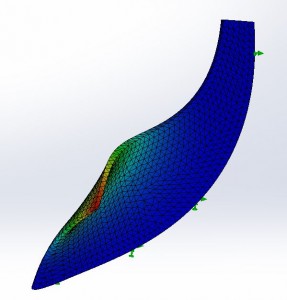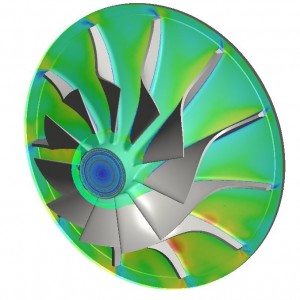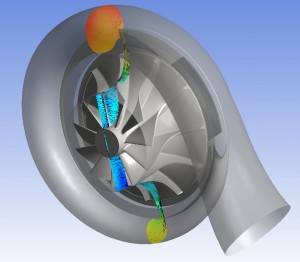During the height of general aviation’s boom in the ‘60’s and ‘70’s, Garrett AiResearch was busy developing a variety of new turbocharger designs for the rapidly expanding business and private aircraft markets.
When that market slowed, so did Garrett’s need to continue to improve on aircraft turbocharger designs. By the time Honeywell (by then the owner of the Garrett AiResearch part of the business) sold their aviation turbocharger line to our predecessor in 2000, there was essentially no demand for new turbocharger designs.
Since that time, the legacy Garrett designs have continued to serve us well. But, as with most things aviation, pilots always have a thirst for more performance. And since the word turbocharger has become synonymous with increased performance, Hartzell Engine Technologies recently entered into an active engineering program to find ways to put more “performance” into our new-generation aircraft turbochargers.
This new turbocharger development program is part of our commitment to be the undisputed technology, performance and quality leader in each of our product categories. Since aircraft turbocharger design hadn’t changed in at least the past 15-years, we’ve needed to make significant investments in new capabilities to develop, test and certify new-generation turbochargers. That’s been achieved through the following actions:
- Dedicating our Designated Engineering Representative (DER) powerplant engineer to the turbocharger product line.
- Investing in specialized training for our engineering and product testing teams.
- Developing a relationship with an independent test facility for performance mapping and burst and contaminant testing.
- Developing our own hot gas test stand to conduct turbocharger durability testing.
While all these actions are significant, the area where we’ve made our biggest change has been in upgrading to state-of-the-art design, simulation and testing software. For example, we’ve equipped our engineers with the most advanced computational fluid dynamics (CFD) design and simulation suites, including Ansys CFX computational fluid dynamics and Ansys Blade Modeler for geometry development. We have also expanded our mechanical simulation capability with the addition of Dyrobes rotor dynamics software. These are undeniably the best tools in the business.
The major benefit is that we now have an unprecedented look at what goes on inside the turbocharger under real world operating conditions. And that knowledge, along with updated materials, and new-generation manufacturing and testing capabilities are enabling our turbocharger-engineering group to make some significant improvements in turbocharger performance and reliability.
For example, we’ve been developing a brand new turbocharger for a major aircraft engine manufacturer. HET created a design, matched to the engine’s operating requirements, predicted performance through simulation, fabricated a prototype test article, validated its performance and developed performance maps on a hot gas test stand – all before delivering the new turbocharger to the engine OEM for dyno testing.
I’m happy to say that those tests have gone very well and have demonstrated that the turbocharger is performing as our engineering analysis had predicted.
In addition, we have recently completed a design study on another engine/turbocharger combination that will enable the engine to operate more efficiently at higher altitudes. That’s something that was cost prohibitive to do without the tools we have available to us today.
This is just the beginning of what we will do to improve turbocharger performance and thus advance aviation piston engine performance going forward.





